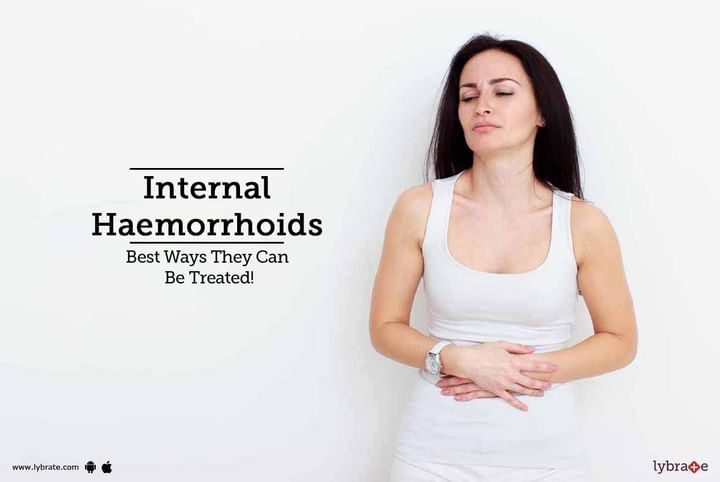Internal Haemorrhoids - Best Ways They Can Be Treated!
Hemorrhoids or piles are diagnosed by swelling of veins in the lower part of anus and rectum. Due to swelling, the walls of rectum and anus are stretched and thus become irritated. Hemorrhoids are of two types: Internal and External hemorrhoids.
Internal Haemorrhoids: As the name suggests, the piles are not visible from outside. These are present deep inside the rectum, located above the pectinate line and these are covered with the cells that are present through the rest of intestines. Internal hemorrhoids are normally painless. The first sign of internal hemorrhoids is rectal bleeding. However, straining can push internalhemorrhoid and it protrudes through the anus and this can be painful.
Causes of Haemorrhoids
The swelling of hemorrhoid occurs only when the pressure in the small vessels of rectum and anus is increased and is engorged with blood. The size of the hemorrhoids is also increased. The increased pressure may be due to various factors:
- Consuming low fiber diet and pushing or straining while passing stools, thus blood vessel pressure is increased.
- Pregnancy also is a cause of swelling as there is the increased pressure of the uterus on rectum and anus.
- Sitting for long on toilet also increases pressure.
- Obesity is also a cause of hemorrhoids.
- People suffering from diarrhea, both acute and chronic.
- A person having colon cancer might have hemorrhoids.
Signs and Symptoms of Haemorrhoids:
- The most common symptoms of hemorrhoids are painless bleeding, itching in anal, swelling and feeling of the presence of lump at the anus.
- All these symptoms are associated with inflamed hemorrhoid.
- Inflamed internal hemorrhoid can cause swelling, but is painless as there are no fibers attached to veins above the pectinate line that cause pain. However, passing hard stools can scrape off the thin lining of hemorrhoid, which can cause the painless bleeding.
- Spasms of the rectum and anal muscles caused by these swollen hemorrhoidscause pain, especially when they are protruded through the anus.
- Internal hemorrhoids can form a clot or thrombose resulting in severe pain.
- The presence of has inflammation, stool,and constant moisture and these can lead to itching and burning sensation in the anus among patient of internal hemorrhoid.
Treatment of Haemorrhoids
- Diet: Haemorrhoids can be treated when individuals consume a fiber-rich diet in order to soften the stools and ease their bowel movements. Fiber-rich foods include fresh fruits, dry fruits, grains, vegetables, and cereals. About 20 to 30 grams per day of fibrous foods is recommended. Dietary fiber will help create bulk in the intestines which will help in softening of stools and ease bowel movement. Supplemental fiber available in the marketincludes psyllium husk, methylcellulose, and calcium polycarbophil. Other recommendations include increased intake of liquids and having stool softeners. Drinking enough water and liquids will prevent stool from hardening.
- Over-the-counter topical treatment: There are various products available to treat hemorrhoids, such as gels, hydrocortisone creams, ointments, foams, pads, and suppositories.
- Home remedies: Soaking anus in a warm sitz bath might also help in hemorrhoids for about 10 to 15 minutes per day. One should practice good hygiene and clean anus with warm water while showering. Avoid using soap and dry toilet paper. One can also use a cold compress on the anus.
Minimally Invasive Procedure for Hemorrhoids (MIPH)
Out of the various types of medical and surgical interventions available to treat Piles, Minimally Invasive Procedure for Hemorrhoids (MIPH) 0r painless stapler surgery is known to be very popular since it acts an alternative approach to surgical interventions made for piles.
MIPH is defined as a minimally invasive surgical technique in which a band of loose or prolapsed mucosa and sub mucosa in the rectum is excised, proximal to the piles and disrupted mucosa is fixed by ‘stapled end to end mucosal anastomosis.
This will ultimately occlude the blood supply to the superior hemorrhoidal artery above the hemorrhoidal tissue, resulting in the retraction of prolapsed mucosa back to its original anatomical position. A special circular stapler known as PPHO3 is used in the anastomosis and the whole maneuver will take around 30–45 minutes. In case you have a concern or query you can always consult an expert & get answers to your questions!



+1.svg)
